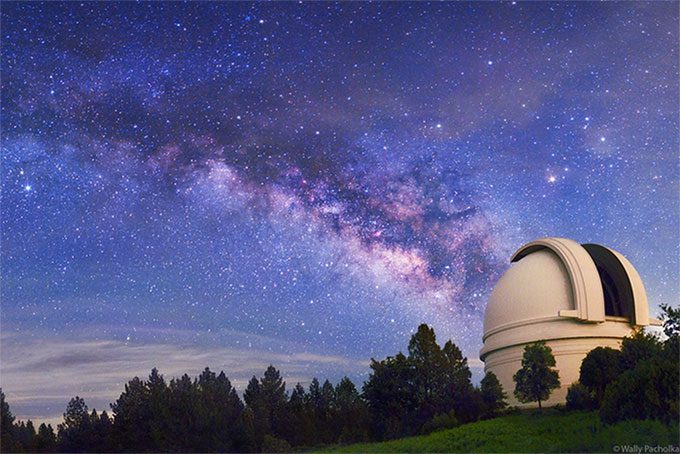The signal named “First Light” took only 50 seconds to travel the distance 40 times that of the Earth-Moon gap to reach the Palomar Observatory in California, USA.
This is not a signal from extraterrestrials, but rather a technological breakthrough from NASA.
The unprecedented signal recently received by Earth is part of NASA’s Deep Space Optical Communication (DSOC) experiment, which the agency refers to as “First Light.”

Palomar Observatory received the signal from Psyche in just 50 seconds – (Photo: PALOMAR OBSERVATORY).
In the experiment, NASA’s spacecraft named Psyche sent a signal encoded in photons emitted from a laser.
Compared to conventional radio signals, light from this type of signal travels compactly and restricts the beam within a narrow channel, requiring less energy and being less susceptible to interference from obstacles.
This technology will help increase bandwidth and significantly boost data speeds, allowing us to transmit large interplanetary files with minimal delays.
Previously, using radio technology, signals from a spacecraft operating on another planet or drifting at the edge of the solar system took a long time to reach Earth.
This time, by utilizing lasers for infrared light to travel as quickly as possible, the Hale Telescope at Palomar Observatory received the message from Psyche just 50 seconds later.
The project aims to create a new method of interplanetary communication, and even interstellar communication, for future deep space missions, or more ambitiously, to communicate with extraterrestrials if their locations are identified.
NASA scientists are still working to improve transmission, including making signals transmit more efficiently and capable of carrying larger files, such as long videos…
“It’s a tremendous challenge and we have a lot of work ahead of us,” said Dr. Meera Srinivasan, head of the DSOC team at NASA’s Jet Propulsion Laboratory (JPL).
The Psyche spacecraft was launched on October 13 of this year, with the primary mission to explore the asteroid 16 Psyche, a metal-rich object some studies suggest could be filled with gold, platinum, and other precious elements.
Importantly, NASA researchers believe that 16 Psyche may be the core of a failed planet formation, thus studying it could provide insights into how Earth and its “neighbors” in the solar system came into existence.
This asteroid is located in the asteroid belt between Mars and Jupiter, and the Psyche spacecraft is expected to arrive there by 2029. The Psyche project is also managed by JPL-NASA.


















































